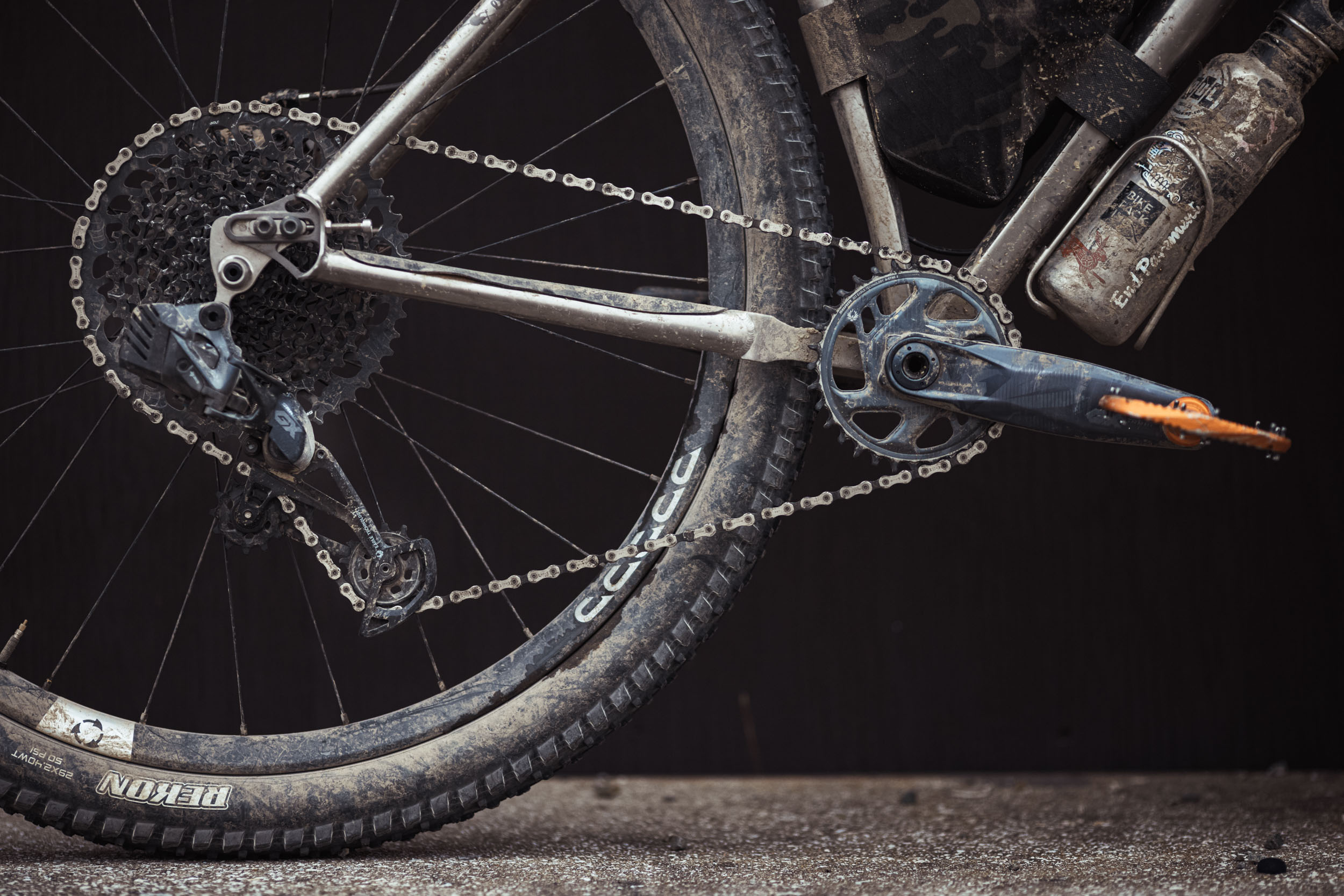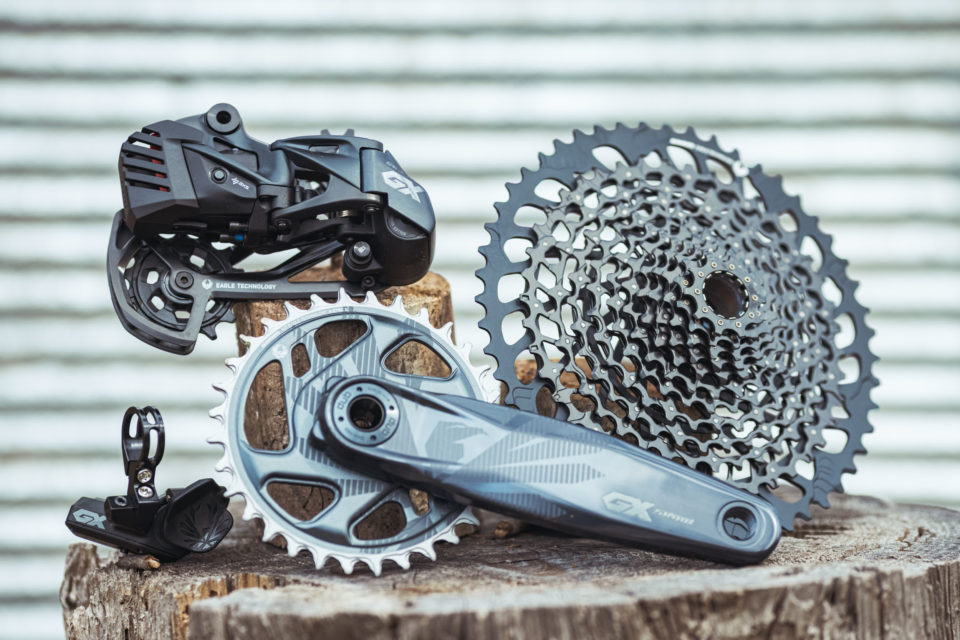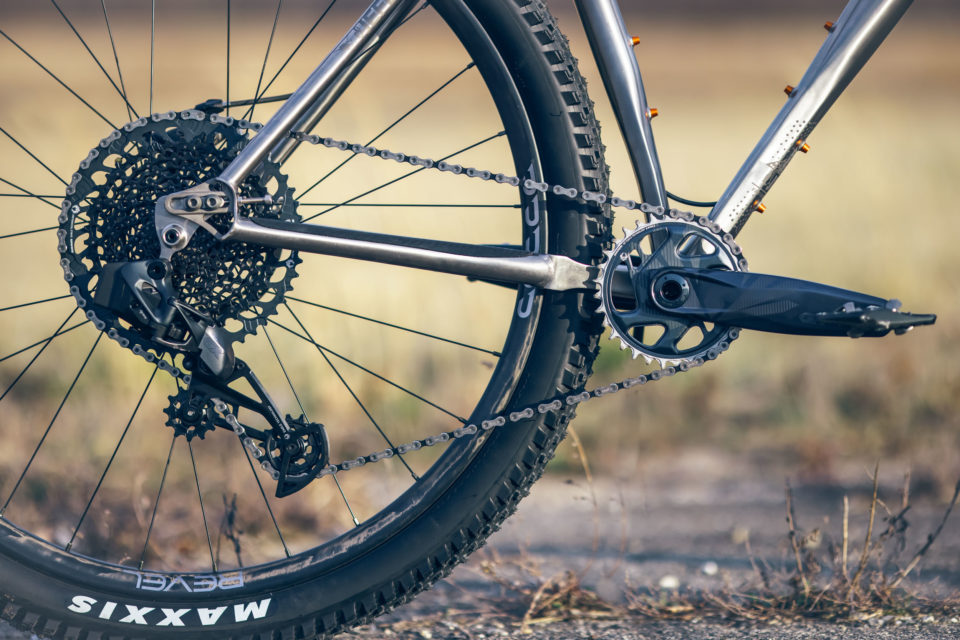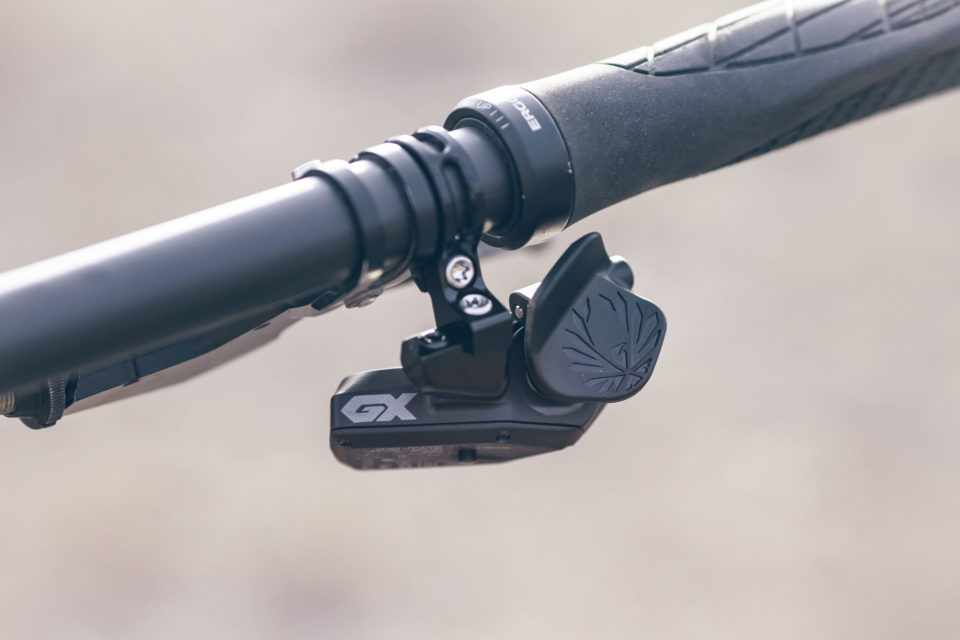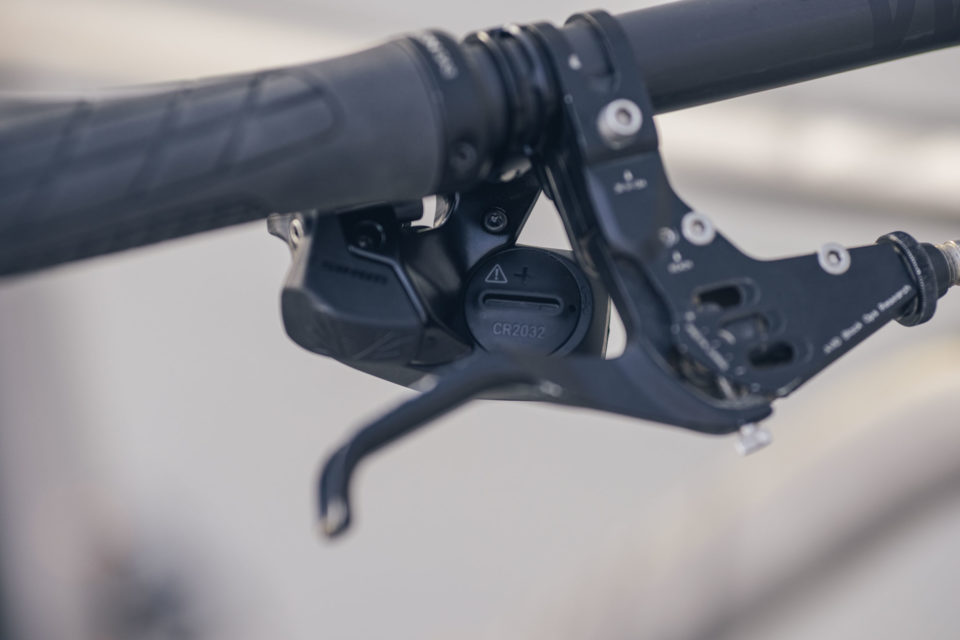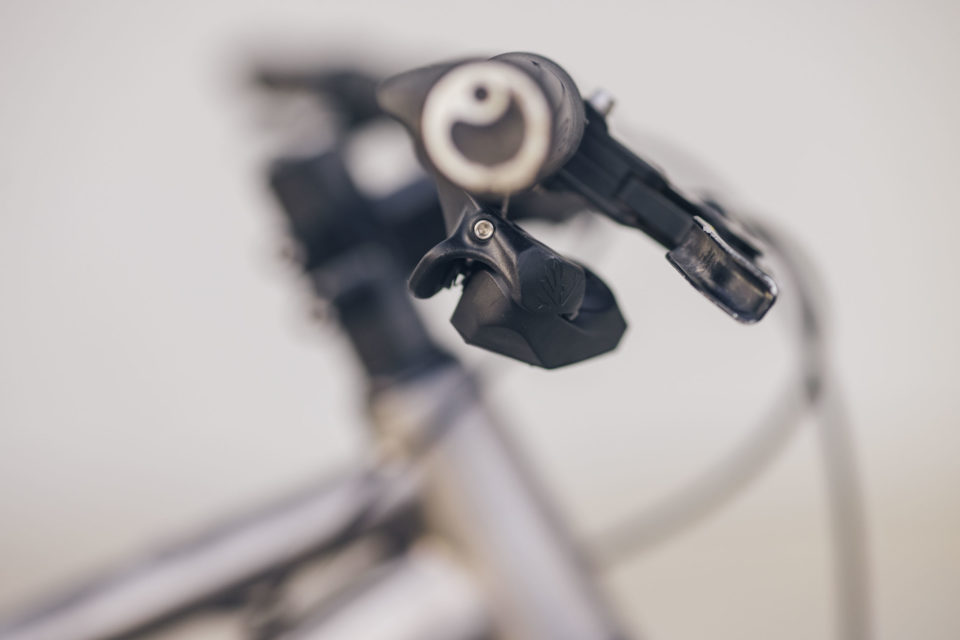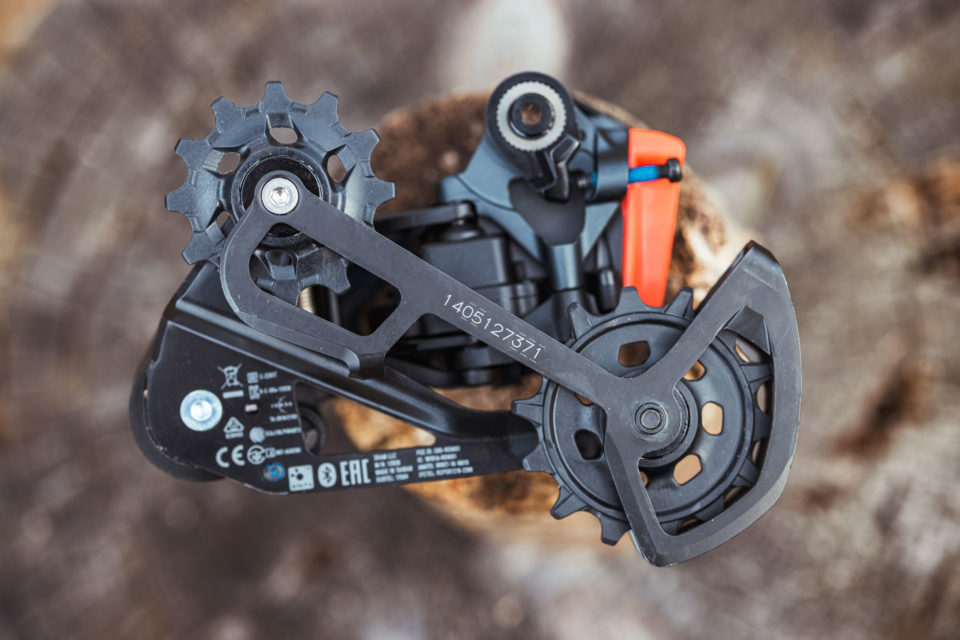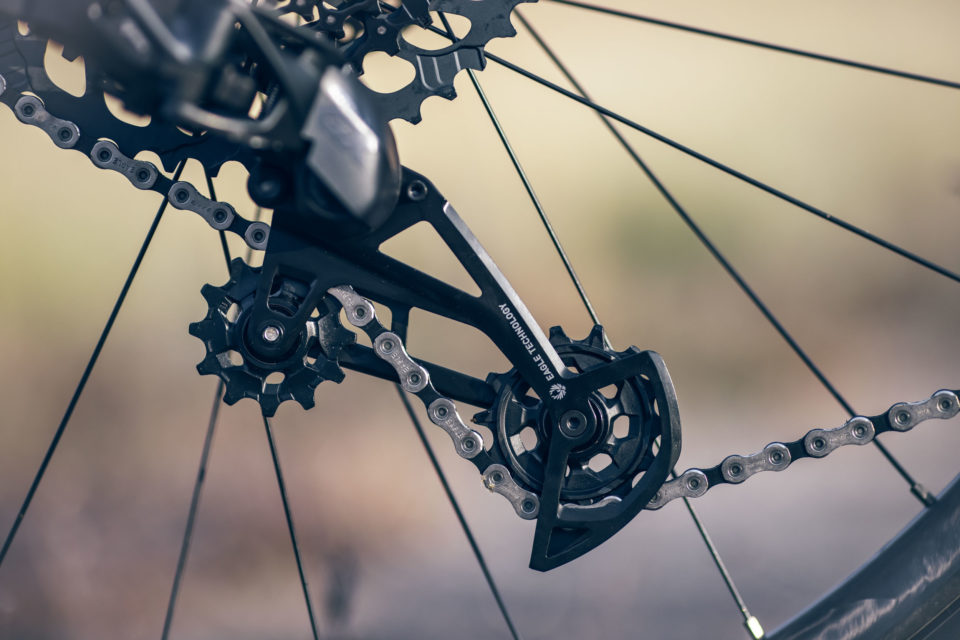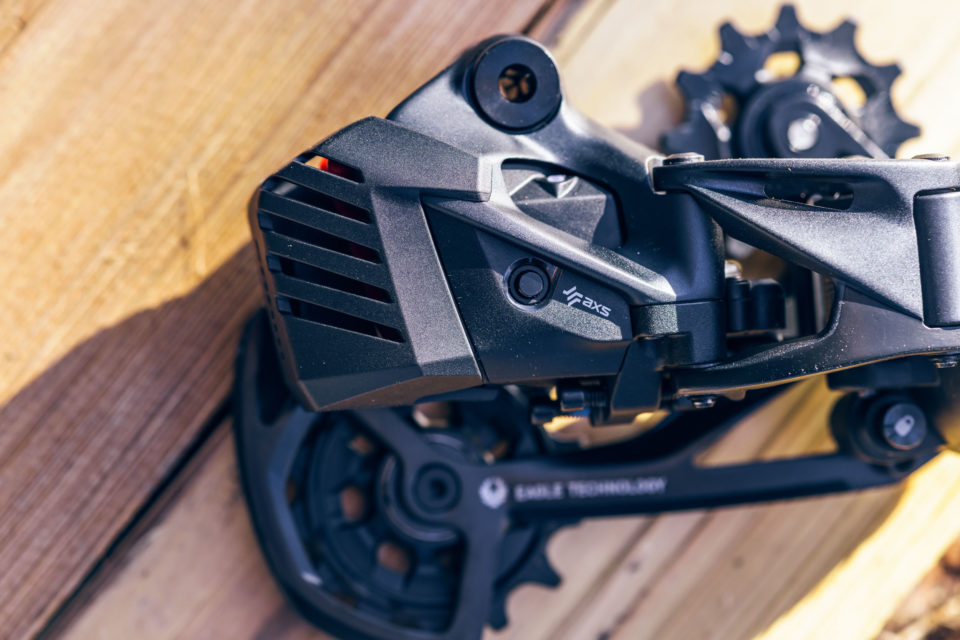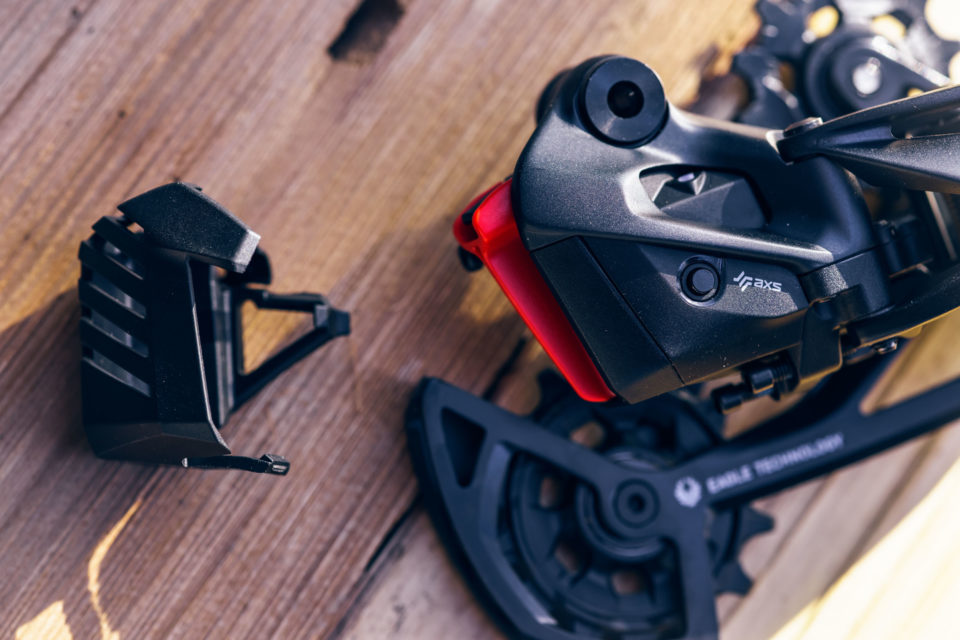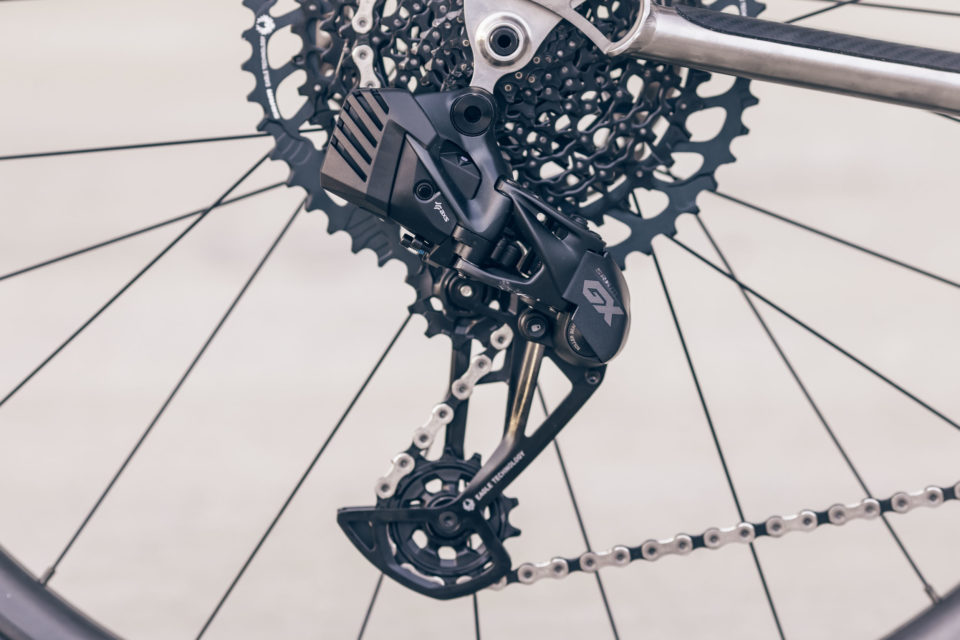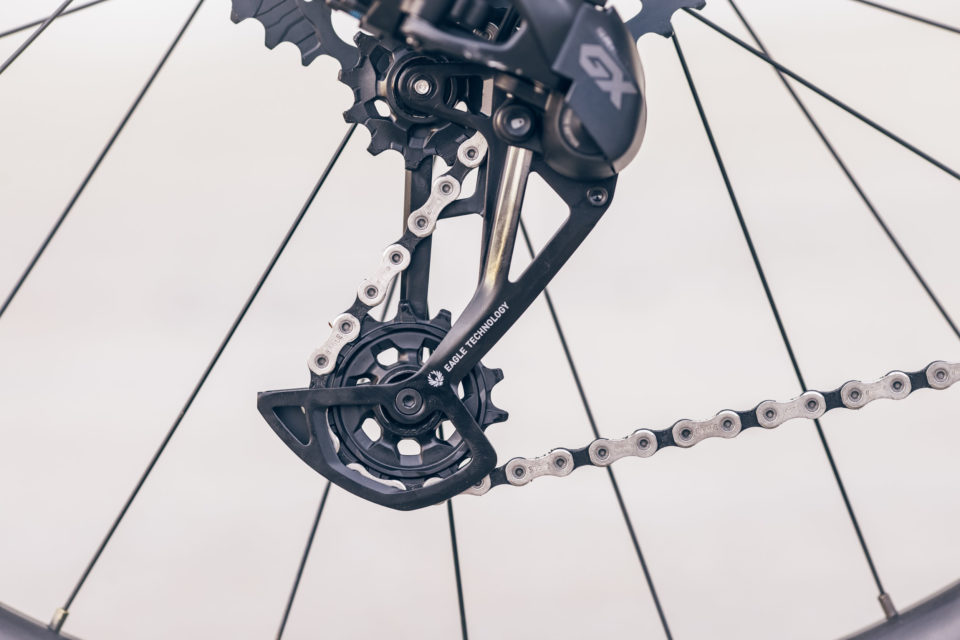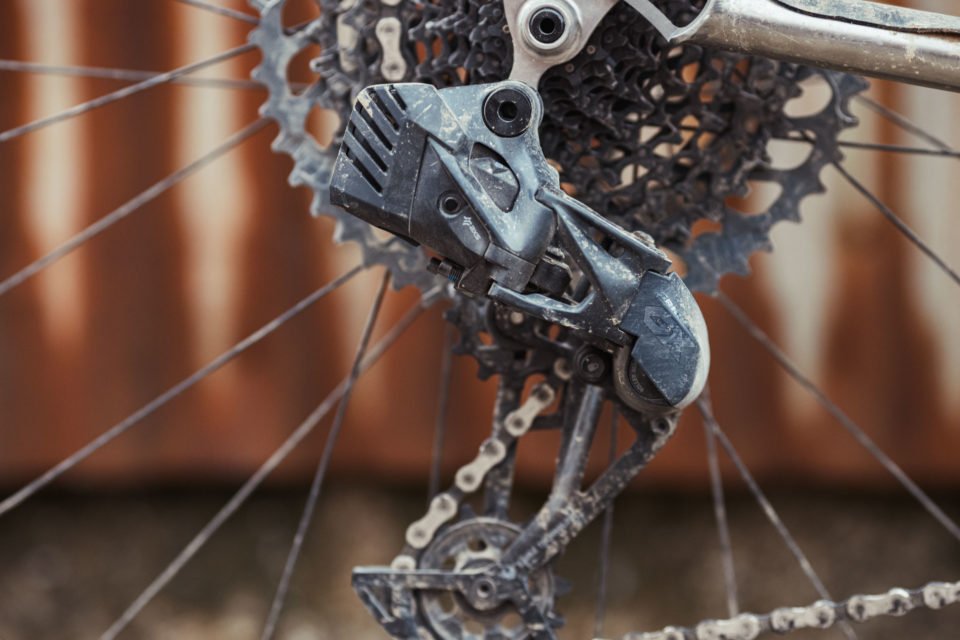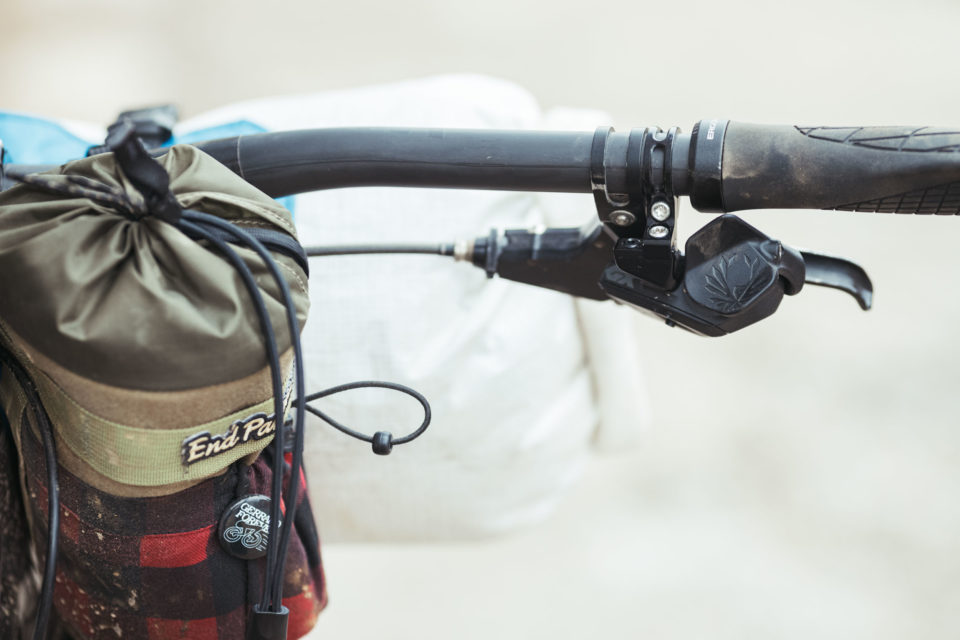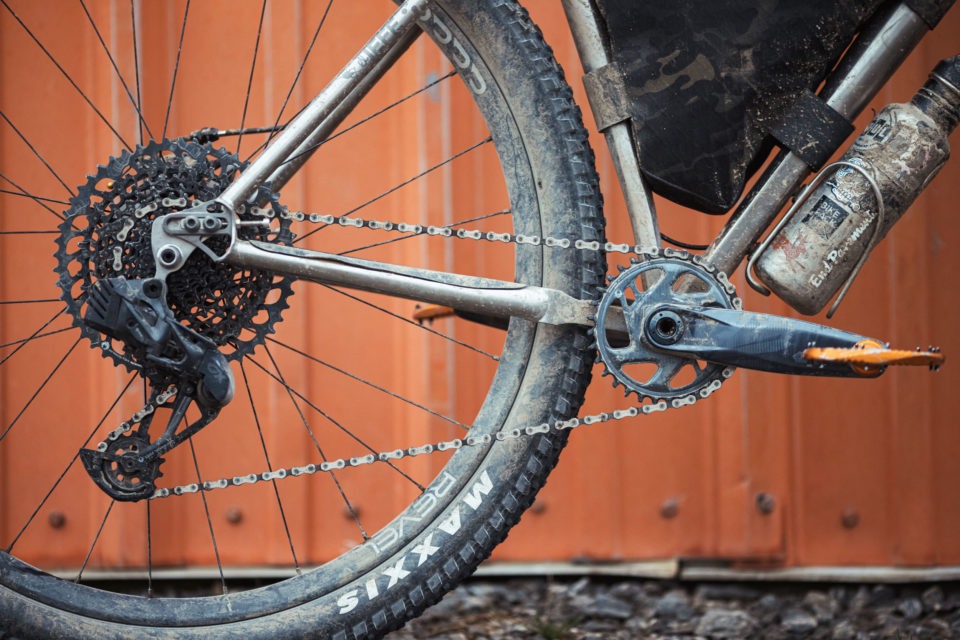SRAM GX Eagle AXS Review: First (Beat Down) Ride
Although it was just announced, we managed to put a couple hundred (hard) miles on the new SRAM GX Eagle AXS drivetrain for this review. The group gets the same wireless tech used in X01 but makes wireless shifting a little more affordable. Find all the specs, weight comparisons, and a full gnar report here.
PUBLISHED Mar 25, 2021
If you’d have told me a few years ago that I’d be publishing not one, but two reviews of battery-operated wireless drivetrains on a website dedicated to bikepacking, I’d have probably burst into a sinister laugh. But here we are again, and the old luddite me is eating my words once more. Despite my past skepticism, I’m pretty excited about the new SRAM AXS GX drivetrain. Plus, it gives me a chance to gloat a little. One of my predictions in our 2021 crystal ball video from January was in fact that there would be a SRAM GX AXS group announced this year, even with the bike market experiencing a veritable component famine right now. I didn’t have any kind of inside scoop, I promise. And believe it or not, that was more of a wish than a confident prediction.

At any rate, I’ve been riding the new GX AXS for a few weeks now, including a three-day bikepacking trip that involved some of the rowdiest terrain I’ve encountered in a while, complete with a sub-freezing night, plenty of bushwhacking, and at least five river fordings. Read on to find details and my impressions of SRAM AXS GX in this first beat-down review…
GX AXS vs. X01 AXS (What’s Different)
I was stoked when SRAM called me up to preview the new AXS GX, and not just because I would have bragging rights. Truth is, I’ve been keen to see this technology trickle down into more accessible offerings since it was first announced. Don’t get me wrong, I’m not some new-tech cheerleader hoping to usher in the next wave of robotic bike parts, but I appreciate what AXS has accomplished. I’ve put a ton of miles on the X01 AXS group since my initial review and I absolutely love it—that includes an 800+ mile solo scouting trip this past summer. In a nutshell, it’s hard to beat AXS’s quick, precise, and always-in-tune shifting, as well as its wide range… not to mention the lack of cables, which I’m quite fond of. Additionally, it’s proven to be quite reliable. Of course, AXS isn’t for everyone. Aside from the technophobia and cyberphobia that’s inherent to many bikepackers and bike tourists, and perhaps some weird subgenre of nomophobia, the price is likely the biggest hurdle for many folks. SRAM’s GX Eagle AXS aims to address the latter, get wireless shifting into more hands, and ultimately treat some of those phobias.
So, aside from the price—which I’ll get to soon enough—what are the differences between the two groups? Surprisingly very little once you get down to brass tacks (i.e. the shifter and derailleur). I’ve already covered the cassettes, chains, and crankset, which are the same as the mechanical groups (see my long-term Eagle GX Review). So, for this review, I’ll focus on the controllers and derailleurs. I was slightly shocked to hear that all the internals inside the AXS GX controller and derailleur are nearly identical to their AXS X01 counterparts. They essentially operate the same way and I’m happy to report that SRAM didn’t nix any features in order to separate the two lines. They both offer the same app integration, customizable controls, derailleur Overload Clutch protection, and other bells and whistles that you can read about in my detailed X01 AXS review. They can even all connect to one another. That means you could have a GX AXS controller and X01 AXS derailleur, or vice versa, for example.
| Group | GX AXS | X01 AXS | GX AXS | X01 AXS |
|---|---|---|---|---|
| Derailleur* | $370 | $500 | 452g | 362g |
| Shifter | $150 | $200 | 80g | 82g |
| Crankset (32T ring) | $135 | $350 | 635g | 481g |
| Cassette | $215 | $385 | 453g | 350g |
| Totals | $870 | $1435 | 1630g | 1304g |
*Derailleurs weighed without battery or new protective battery cover
Pricing
Speaking of brass tacks, it really comes down to the controller and derailleur when you’re looking at pricing. The net difference is about $180 bucks between the two, or considering the AXS upgrade kits, a $200 price difference. The new GX AXS upgrade kit is $600 and X01 AXS kit is $800. Both include the rear derailleur, battery, controller with clamp, charger/cord, and chain gap tool. Generally speaking, GX is significantly cheaper than X01, but there’s not a massive price gap until you look at the cassette and cranks.
Construction
Aside from the Lunar colorway, the biggest difference (in fact, the only one as far as I can tell) in the GX Eagle AXS derailleur is the cage. The X01 AXS derailleur has a forged aluminum cage and the GX version has a stamped steel cage, like its mechanical sibling. As you can see in the chart above, the GX AXS derailleur is about 90 grams (3.2 ounces) heavier. What about that slotted battery cover, you might ask? The AXS battery cover is actually a newly released part that’s sold separately and fits all AXS mountain bike derailleurs. I’ve never had any issue with battery damage, so I don’t think it’s entirely necessary, but it’s nice to have a little insurance, I suppose. It’s made of plastic and weighs 10 grams. The GX and X01 AXS shifter controllers are pretty much exact duplicates from what I can tell. Even their weights are relatively the same; the GX controller actually weighs two grams less than the X01 version.
GX AXS Set Up + Shifting
As expected, setting the GX Eagle AXS group up was super easy. Pairing the shifter and derailleur is simple and after dialing in the B-gap, it was a matter of tuning the “micro tension” a little bit by holding in the AXS button on the controller and moving shifter paddles to adjust the cage inboard or outboard until it was perfect. All in all, the GX AXS group has that same quick bzzt shifting and always-in-tune feel. Aside from a little more of a clunk and perhaps not as crisp a feel as the X01 group, there’s hardly a discernible difference in the shifting action. The cassette and chain are the likely culprits for any slight quality discrepancies.
One thing to note is that I’ve never been fully confident with shifting under load with either X01 or GX AXS, despite SRAM’s claims that they can do so. It may be slightly closer to attainable than it would with mechanical Eagle, as the shifts are sure and quick, but soft-pedal shifts result in a smoother shift with less crunch. This was a bit more noticeable in GX AXS than X01. That said, that’s how I shift habitually, so I have no complaints there. I did have a little bit of an issue with having the chain come off the 52T cog and dropping 2-3 cogs when backpedaling, however. Others have reported this in GX Eagle in general, although my GX kit has no such issues. Later inspection revealed that I trimmed my chain about a link short, which is the likely culprit. Eagle is particularly sensitive to proper B-tension and chain length, and I have no reason to attribute this to the derailleur or cassette.
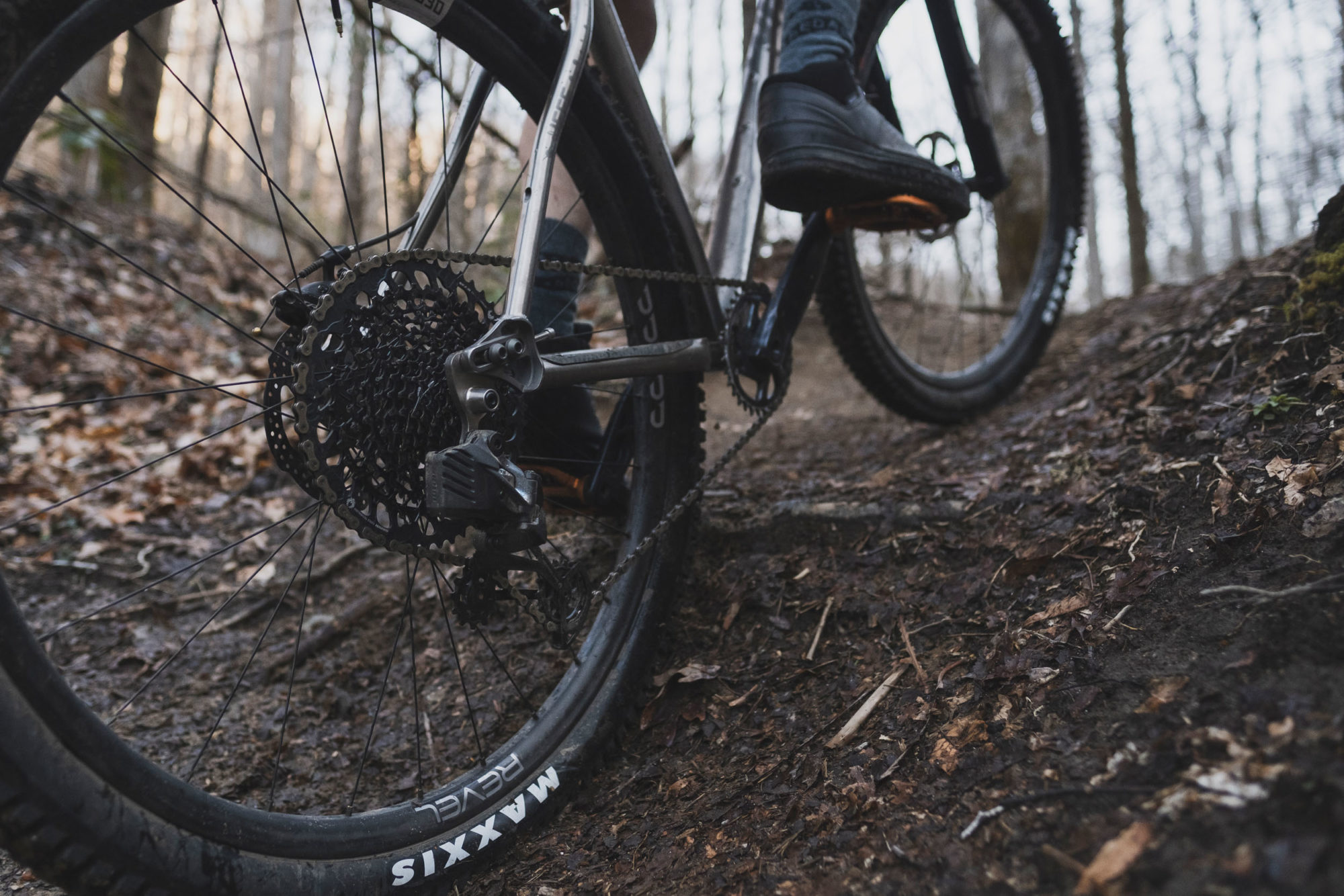
It’s worth adding that this is my first rodeo the standard AXS MTB rocker controller. The AXS X01 group I tested is set up as a mullet, with Force AXS levers and an Eagle drivetrain. The obvious benefit to the AXS controller was immediately clear. With just the press of a thumb or a pull of the forefinger, single and even multiple shifts are quick and easy, which means a lot less hand movement and contortion. For someone shifting a lot in a 24 hour race, or something like the Arizona Trail Race, this could be a godsend. It’s not without cons though. I found myself accidentally tapping the upshift lever during downed tree portages (of which there were many) on my recent outing. Then once I mounted the bike to pedal off, I’d get that dreaded crunchy shift under load. Of course that happened less and less as muscle memory developed over the ride.
Through the Rivers and Over the Woods
After installing the new GX Eagle AXS on the once-shiny, yet-to-be-released, not-to-be-named bike you see in these photos, I took it out on a few long day rides around Pisgah. As it happens, I was then able to take it into the ultimate proving ground. This particular three-day bikepacking rip in Eastern Tennessee included every derailleur-snapping, spoke-popping, stuff-breaking thing you could throw at it. We had countless trees blocking the trails, bushwhacking, loads of mud pits, chunky ATV tracks, and technical singletrack. There were also at least five significant river crossings (I lost count), a couple of which I forgot I had the AXS derailleur in tow and left it submerged. In addition, we had one subfreezing night, probably somewhere in the high 20s, where I worried that the AXS battery might get cold-sapped.

I’m happy to report that the system made it out unscathed and stayed fully in tune. Better yet, when I looked at the battery level in the app, it had barely moved after three eight-hour days of riding. That leads me to believe that the GX Eagle AXS derailleur has about the same battery life as the X01, which is essentially much longer than SRAM’s overly conservative 20-hour ride time estimate. Generally, most of us have gotten somewhere around 750 miles per battery. I got about that on my big solo trip this summer and Neil and Joe both reported around 800 miles as well.
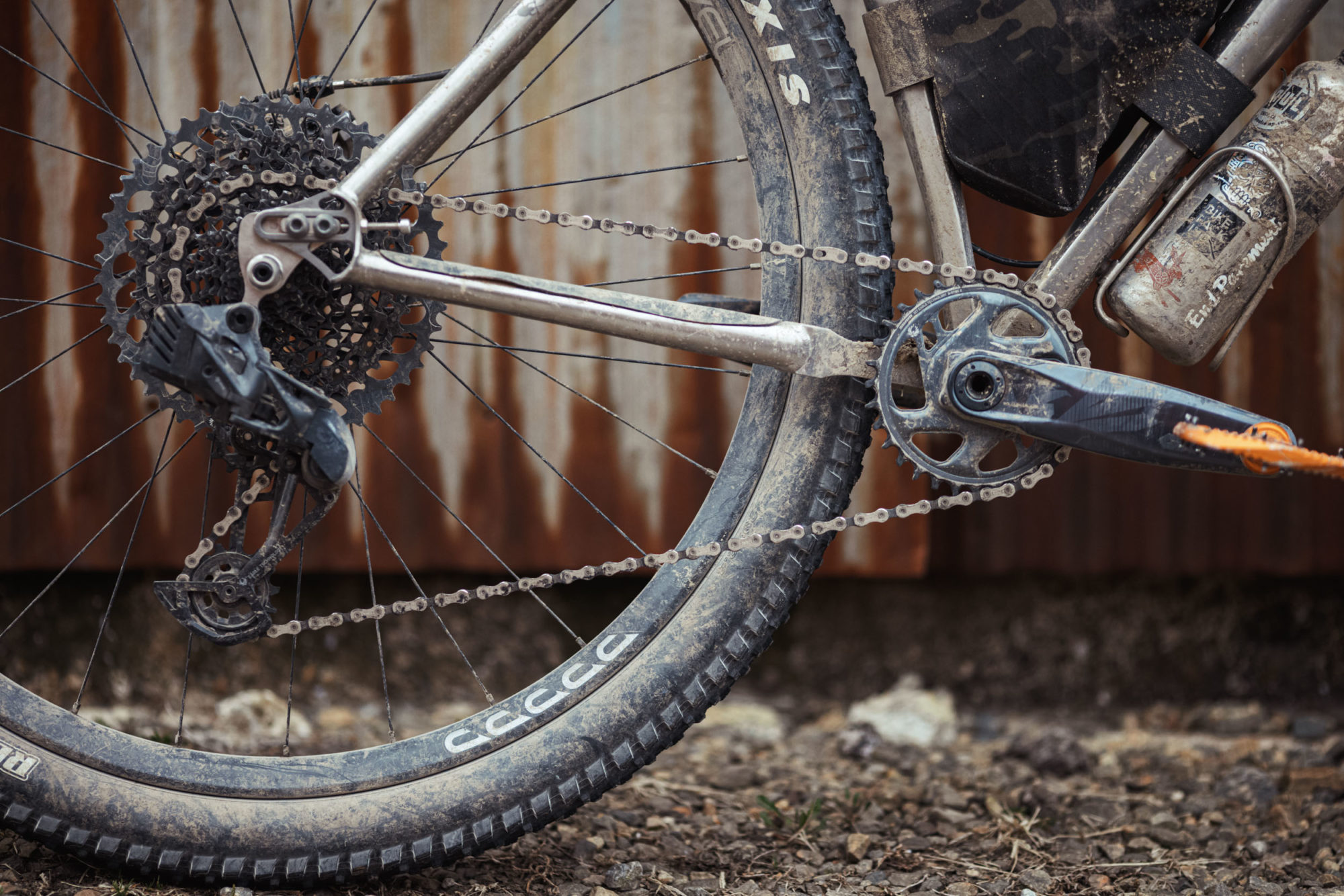
- Model Tested: GX Eagle AXS Upgrade Kit
- Actual Weight: 567 gram (rear der, controller, battery, cover)
- Place of Manufacture: Taiwan/China
- Price: $600
- Manufacturer’s Details: SRAM.com
Pros
- Snappy wireless shifting at nearly half the cost of X01 AXS
- Reliability and solid battery life through water submersion, cold temps, and lots of use
- Like other AXS groups, there are no cables, which not only saves weight but saves paint and bag interference
Cons
- Cheaper but still not widely affordable
Wrap Up
In a nutshell, the new GX Eagle AXS group essentially took a group I already loved and added a wireless option that I’ve found to be equally as reliable, intuitive, and well-executed. I’m sure there will be a string of comments in general protest of a wireless drivetrain for bikepacking, but I’ve become 100% confident AXS group over the years, despite my initial naysaying when the tech was released back in February of 2019. This isn’t a long-term review, by any means, but in my short time with the GX AXS components, it’s clear that it has the same guts as the venerable X01 that I’ve put thousands of miles on. And, I was fortunate enough to put the GX AXS through a rigorous multi-day acid test.
Speaking to the misanthropes, it’s worth reiterating a quote from my original AXS review, “We all have some quixotic vision that our bikes should be built to survive a 20,000-mile journey to the edge of the Earth and back. But in reality, 99.9% of us don’t need an apocalypse-proof rig with a weldable swingset-steel frame, legacy QR hubs, and a replace-anywhere square-taper bottom bracket.” Not everyone will apply that to their bikepacking rig kit choices, but I certainly have complete confidence taking an AXS drivetrain on any given week-long or two-week trip, almost anywhere. And at this point, I’d consider it for even longer trips, for that matter. With that, I’m excited to see SRAM find success with the technology and advance it into a slightly more affordable group for those who have the resources and were on the fence before.
Even though this review still racked up 2,000 words, I didn’t cover all the details; much of that was discussed in the original AXS review. So feel free to add your questions to the conversation below.
Please keep the conversation civil, constructive, and inclusive, or your comment will be removed.







